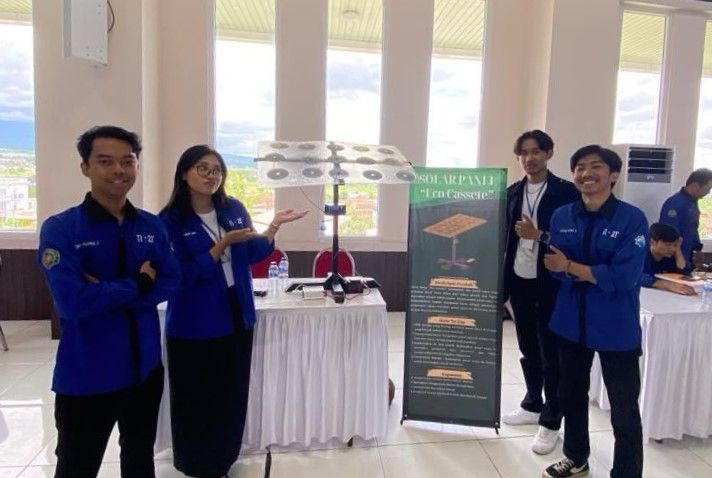 |
| UMM Industrial Engineering students who successfully created eco-casset solar panels (Photo: Special). |
The academic community of the University of Muhammadiyah Malang (UMM) has made many innovations. This time, innovation came from the Industrial Engineering Study Program students who succeeded in creating an eco-cassette solar panel. This creation was successfully displayed at the Industrial Engineering Expo (IEE) last January.
In general, solar panels use silicon semiconductor materials to produce energy. However, Anum Maharani Siregar and her team substituted the semiconductor material with waste CD cassettes wrapped around copper to generate power, which is converted into electricity. Anum said that the idea for this solar panel was based on the high amount of unused cassette tapes.
"We noticed that cassette tapes are rarely used anymore in daily needs. Moreover, cassettes are difficult for soil to decompose, so we had the idea to recycle cassettes," she said.
In addition, it is also relatively easy to obtain CD tapes, unlike other materials with the same function, such as copper and steel, which are more expensive. Arum explained that cassettes have good heat conductivity when placed under the sun. Then, when wrapped around a copper cable, the heat energy generated by the cassette can be converted into electrical energy. The CD cassette will break down the photons brought by the heat energy into positive and negative ions. Then, the two ions will continue to move and bind to each other to form a direct electric current or DC.
Read more: UMM Lecturer Shares How to Express Anger Without Hurting Others
Anum explained that an inverter converts the DC flow produced by his solar panels into a more stable AC flow for household needs. Currently, her solar panel can produce 300 watts of electricity or the equivalent of 12 volts of electricity. "Because the target of our product is for household needs, the electricity generated is only enough to charge a smartphone," she added.
The main difference between his solar panels and others is the power to absorb sunlight. Common solar panels can absorb sunlight even in low heat. Meanwhile, Arum's product is still limited to absorbing the scorching heat.
This led her team to continue developing the product. Therefore, it can produce electricity that can be used in daily life. The power generated is also influenced by the number of turns of the copper cable on the cassette.
Hence, she and her team will make improvements to perfect the solar panel in the future. They will also develop the product to make it suitable for public consumption easily and efficiently. Thus, Anum hopes to collaborate with investors and institutions at UMM to develop her solar panel into a product that is truly ready for use. (tri/wil/put)